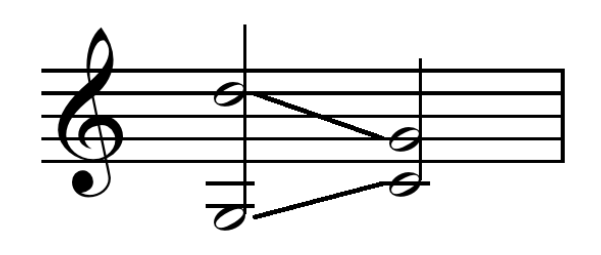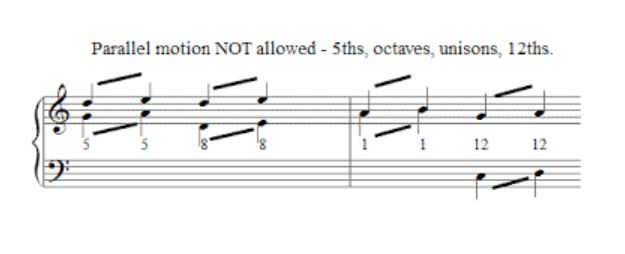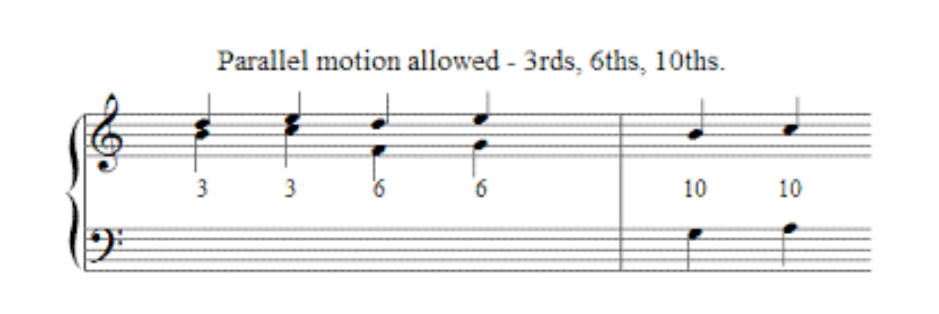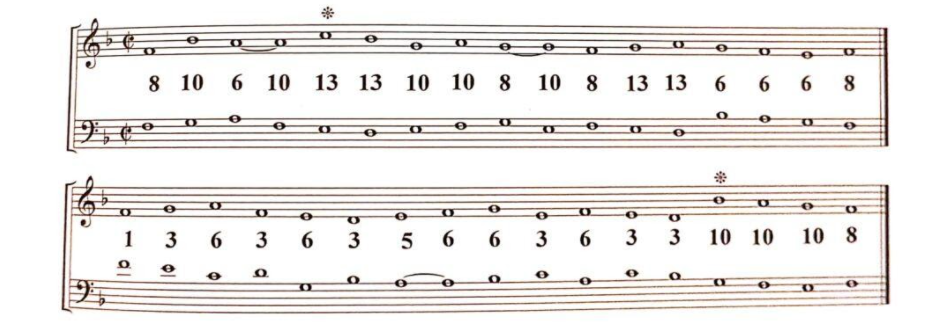Uncategorized
Two-Part Counterpoint – First Species
https://www.youtube.com/watch?v=oonp0wzFYW8
Two-part Counterpoint is the name given to the musical discourse in which two voices conduct each other independently combined to form a coherent whole.
In order to begin our study, You can start reading about this series with our first article learning what counterpoint is. Now, we will cover certain concepts that should be clear before we start with the technique.
Voice Leading
Means that each voice organizes itself while combining with the other to form an intelligible musical fabric.
Cantus Firmus
The cantus firmus is one of the voices that participate in this musical fabric. Its primary function is what its name indicates: unchanged melody or given melody; a previous voice on which another voice is elaborated to perform the Counterpoint.
The voice that is created based on the cantus firmus (CF from now on) is called Counterpoint.
Throughout the species of the strict or pure Counterpoint, elements will be introduced, from the simplest to the most complex, where the use of dissonant and dynamic intervals will be presented systematically.
GUIDELINES
– This musical fabric results from combining both voices, and its fundamental element is the harmonic intervals between them.
– Every time the CF moves, the Counterpoint must include consonant intervals due to a horizontal conception and not of vertical or harmonic thought.
– There are no crossing of the voices: that means that the lower voice will never be above the higher voice and vice-versa.
FIVE SPECIES OF COUNTERPOINT
Upon a CF, the Counterpoint it will manifest in five different species:
1.- First Species: Note against CF
2.- Second Species: Two notes against CF
3.- Third Species: Four notes against CF.
4.- Fourth Species: Suspensions against CF
5.-Fifth Species: Where each of the above species will be combined in a free rhythmic line of Counterpoint against a CF.
The study of Counterpoint will allow us to acquire melodic prolongation concepts in the composition and apply these techniques in our compositions.
There is much more information in the book “Counterpoint in Composition and the study of the voice leading” (Felix Salzer)
Our study in Counterpoint will allow us to be aware of this book’s concepts such as Melodic prolongation and even chord prolongation.
CONTRAPUNTAL MOTION
When two voices move note against note, we find different movement between them. These movements can be categorized into four types:
Similar motion:
When the two voices move in the same direction (we can have different melodic intervals within the melodic line)
Oblique Movement:
When a voice is held, and the other one moves, regardless of the type of interval (can be a step, skip or melodic leap)
Contrary motion:
When the two voices move in different directions, one ascends, and the other descends. Again, regardless of the type of melodic interval.
Parallel motion:
In which the two voices move at the same interval. The general term for this is CONTRAPUNTAL MOTION.
INTERVALS
We classify the intervals used in this technique as consonants and dissonant.
The nature of the consonant chords is stability, while the dissonant are unstable.
Let’s see now the different intervals:
Perfect Consonant Intervals:
Unison, perfect octaves and perfect fifths.
Imperfect Consonant Intervals:
Major and minor thirds; major and minor sixths.
Dynamic Dissonant Intervals:
Major and minor seconds, major and minor sevenths and all augmented and diminished.
Perfect Fourth:
It is classified nowadays as neutral. Although it is a perfect consonance in the melodic sense, vertically in Counterpoint is considered dissonant.
,Vertically, we will use only perfect and imperfect consonances.
Perfect Octaves and Fifths in Parallel Motion:
Objectionable parallel motions
Vertically, we will avoid these movements between voices, as they deprive of independence to the melodic lines. In both cases, we would be losing a voice, as the two will be perceived as one, which will defeat the primary purpose of Counterpoint. Here are some examples:
Parallel Fifths:


Allowed Movements:
We can use imperfect consonances such as minor and major thirds and sixths as long as we don’t repeat them three times in a row, as they will be perceived and “doublings“, or reinforcements of one voice and not an independent voice.

THE INDEPENDENCE OF THE MELODIC LINES
Elements of Contrast between Voices
The Counterpoint has to achieve a degree of variety and independence concerning the CF, connecting the consecutive sounds as smoothly as possible.
The melodic climax in both voices has to be achieved independently and proceed from there to the end. In other words, the entire melody is articulated without generating isolated moments or isolated notes without any correlation with the other.
The melody must be considered a musical unity, and not constitute the Counterpoint from one note to the next without considering the melody line as an organic arc.
The idea is to always create new melodic movements.
Each melodic climax must not match; each line must provide its unique peak.
Both voices cannot exceed two octaves between them in the vertical aspect, as they will be heard as separate and disconnected.
Contrary movement is preferred above the rest of the contrapuntal motions.
When a voice leaps or skips, it is preferable that the other moves in step progression and vice-versa.
BEGINNINGS & ENDINGS
Beginnings
When the CF is located on the upper voice, the accepted intervals are perfect fifth and octave or unison.
When the CF is located on the lower voice, just the octave or unison will be accepted in between the voices.
Endings
The CF elaborates a melody that starts and ends on the same note, the tonic, which is considered the ultimate restful function. Over the end, this voice makes a MELODIC CADENCE that if formed by two sounds: the Supertonic or II degree of the scale and the on the contrapuntal voice, the leading tone or VII degree and the tonic.
EXAMPLE OF THE FIRST SPECIES:

“Contrapunto y polifonia” (Eduardo Checchi) Page 67
EXAMPLES OF CONTRASTING MELODIC LINES IN THE FIRST SPECIES:
As we said before, independence of the voices is paramount to achieve a good counterpoint.
In these two examples, we can observe how the melodic lines are independent as both have their own climax, favoring contrary motion.
Please note that the climactic note is always performed by a skip or leap, being the minor sixth the preferred interval as it is still today a dramatic interval.
https://www.youtube.com/watch?v=k_vWmNjD3cE&feature=youtu.be

